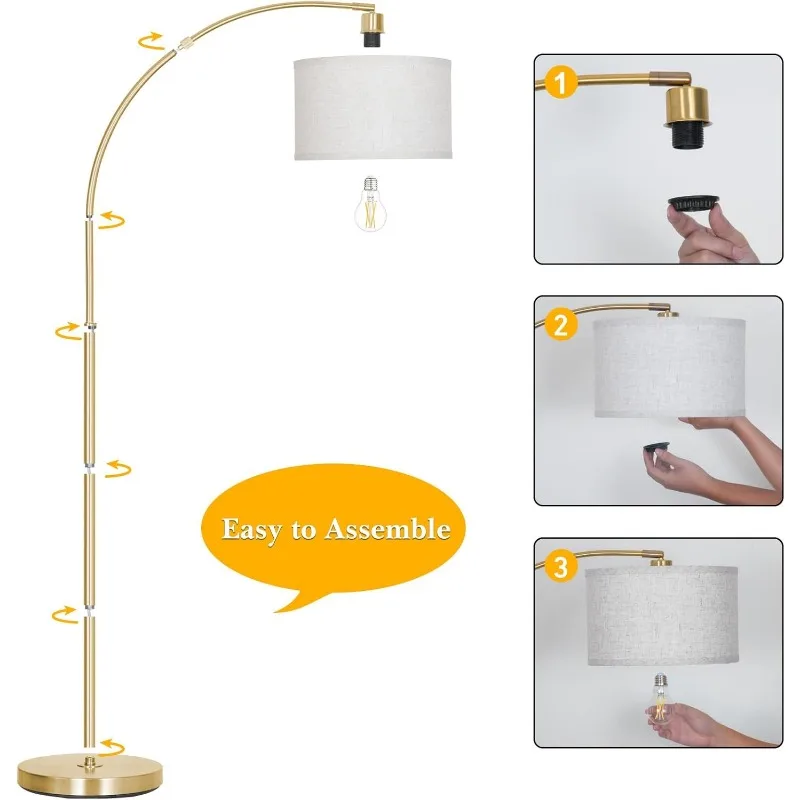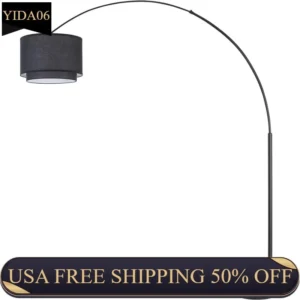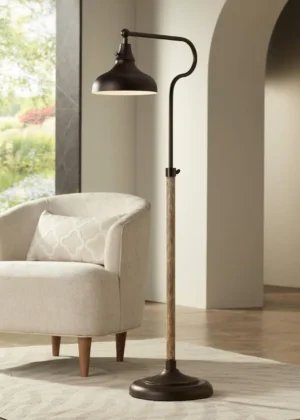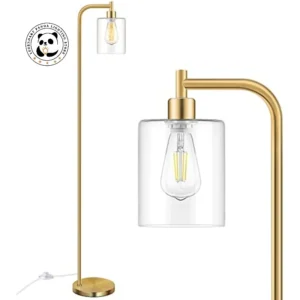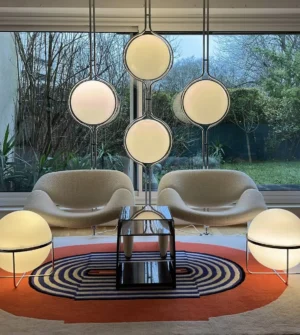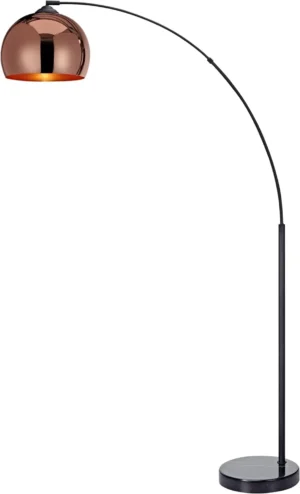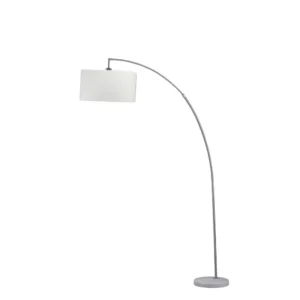Understanding Arc Lamp Cable Challenges
Arc floor lamps bring a distinctive elegance to any room with their sweeping curved design and dramatic reach. However, this same design feature creates unique challenges when it comes to managing their electrical cables. Unlike standard floor lamps where cords can drop straight down, arc lamps often require cables to travel across visible areas of your living space, creating both aesthetic and practical concerns.
The cable management challenges for arc lamps generally fall into three main categories:
- Visual impact: The long, often visible cord can disrupt your carefully designed interior aesthetic
- Safety hazards: Exposed cables create tripping risks, with home accidents involving electrical cords causing thousands of injuries annually
- Cable damage risk: Improperly managed cables are susceptible to wear, kinks, and damage that can shorten the lifespan of your lamp
Proper cable management matters significantly for both the safety of your household and the integrity of your interior design. Understanding the perfect arc floor lamp guide helps provide context for why these distinctive lighting fixtures present unique cable challenges that require thoughtful solutions.
Essential Tools for Arc Lamp Cable Management
Having the right tools readily available makes managing arc lamp cables significantly easier. Here’s what you’ll need in your cable management toolkit:
- Adhesive cable clips: Clear or paintable options that secure cables to walls, baseboards, or furniture ($5-15)
- Cable sleeves/wraps: Fabric, neoprene, or decorative covers that bundle and protect cords ($8-20)
- Floor cord covers: Rubber, plastic, or metal channels that protect cables running across floors ($15-30)
- Wall-mounted cord concealers: Paintable channels that hide cords running along walls ($15-25)
- Velcro/zip ties: For bundling excess cord length neatly ($5-10)
- Basic tools: Scissors, measuring tape, and optional painter’s tape for planning routes ($already owned)
- Electrical accessories: Quality surge protectors or extension cords when needed ($10-40)
Different tools work better for specific situations. For hardwood floors, low-profile rubber covers prevent tripping while protecting cables. For carpeted areas, adhesive clips along baseboards often work best.
These tools will be crucial for implementing the strategies we discuss throughout this guide. Understanding which accessories work best for your specific situation can help determine whether you might benefit from LED arc floor lamps which sometimes feature more modern cable designs.
Smart Furniture Placement for Hiding Cables
One of the simplest and most effective ways to manage arc lamp cables is through strategic furniture placement. By positioning your furniture thoughtfully, you can create natural pathways that hide cables from view:
- Place your arc lamp behind larger furniture pieces like sofas or armchairs whenever possible
- Position the lamp base near walls or corners where the cable can follow a less visible path
- Run cords along the back edges of furniture using adhesive clips to secure them
- Use the legs of tables, desks, or bookcases as natural vertical guides for cables
- Consider furniture with built-in cable management features like hollow legs or back panels
For securing cables to furniture discreetly:
* Use clear adhesive clips along the back edge of sofa frames
* Thread cables through the open backs of bookcases
* Attach cables to the inner legs of consoles and tables using zip ties in matching colors
Smart furniture arrangement is often the first line of defense against visible cables, creating natural hiding spots before implementing more technical solutions. Many homeowners find that big arc floor lamp placement requires special consideration to effectively manage cables while maintaining the lamp’s impressive visual impact.
Floor-Based Cable Concealment Methods
When cables must traverse floor areas, several techniques can keep them secure and visually minimized:
Baseboard routing
* Run cables tight against baseboards using adhesive clips
* Paint clips to match baseboard color for near invisibility
* Use corner protectors where cables must navigate room cornersUnder-rug cable management
* Use ultra-flat cord covers specifically designed for under-rug placement
* Avoid placing cables under rugs in high-traffic areas without proper covers
* Create gentle slopes rather than sharp bends where cables transition under rugsFloor cord covers
* Install cord covers that match or complement your flooring
* Use rubber options for carpet, wood-toned covers for hardwood
* Secure covers properly to prevent shifting or creating new trip hazards
Different flooring types require specific approaches:
* Hardwood floors: Use paintable cord covers or low-profile rubber channels
* Carpet: Snake cables along edges where carpet meets baseboard
* Tile: Consider decorative cord covers that can become a design feature
These floor-based solutions can be especially important for homes with contemporary arc floor lamps where the modern aesthetic demands equally clean cable management.
Wall-Based Cable Management Techniques
When floor-based solutions aren’t ideal, walls offer excellent opportunities for discreet cable management:
- Vertical cable routing: Run cables straight up walls using small adhesive clips placed at regular intervals
- Horizontal wall channels: Install paintable cord channels along walls at baseboard or crown molding height
- Corner solutions: Use corner cable guards where walls meet to protect cables at vulnerable bending points
- Paint-matching: For ultimate discretion, carefully paint cords to match wall colors (using appropriate cord-safe paint only)
For installing wall-mounted cord covers:
1. Measure and cut the channel to your desired length
2. Clean the wall surface thoroughly with rubbing alcohol
3. Apply the adhesive backing or mounting hardware
4. Press firmly against the wall, ensuring secure attachment
5. Insert the cable and snap on the cover facing
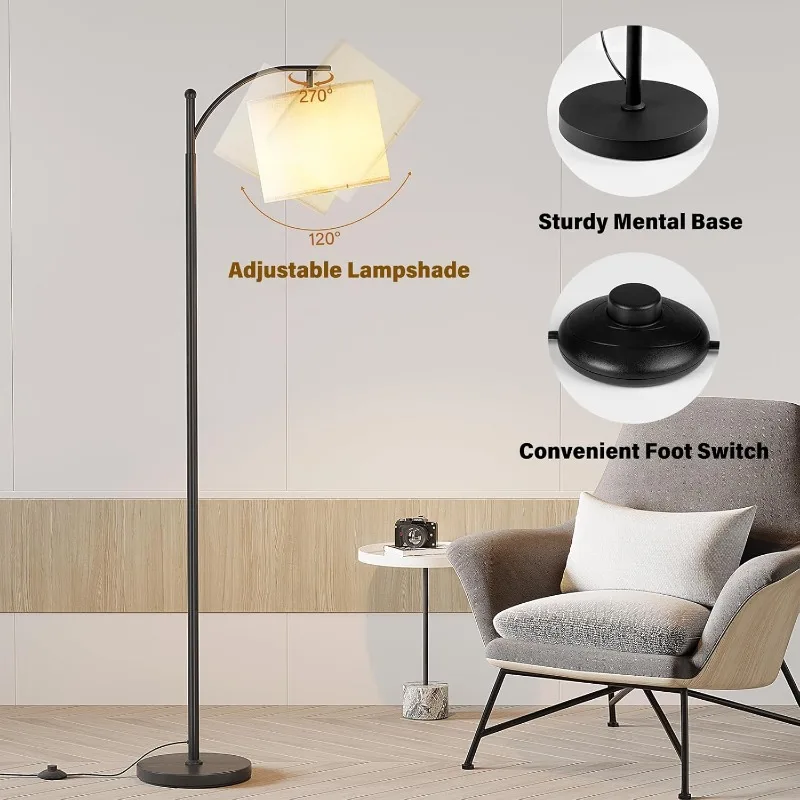
Wall-based solutions can be particularly effective when combined with adjustable arc floor lamps, as you can position the lamp head precisely while still maintaining clean cable lines along walls.
Managing Excess Cable Length Effectively
Many arc lamps come with generous cord lengths that can create messy coils when not properly managed:
- Figure-eight winding: Neatly wind excess cord in a figure-eight pattern to prevent kinking
- Cable management boxes: Decorative boxes designed to hide power strips and excess cord
- Cord shorteners: Simple devices that allow you to wind and store excess cord length
- Velcro wraps: Secure bundles of excess cord without pinching or damaging the insulation
For different amounts of excess cord:
* Minimal excess (1-2 feet): Use a simple velcro wrap near the lamp base
* Moderate excess (2-4 feet): Employ a cord shortener device
* Significant excess (4+ feet): Consider a cable management box solution
Remember that proper management of excess cable not only looks better but also reduces wear and potential damage to the cord. While some people consider shortening cords permanently, this is generally not recommended as it may void warranties and create safety issues.
Understanding these management techniques complements knowing are arc floor lamps good for your specific space and lighting needs.
Creative and Decorative Cable Solutions
Rather than simply hiding cables, consider transforming them into intentional design elements:
- Decorative cord covers: Fabric sleeves, braided covers, or colorful wraps that complement your decor
- Cable as design: Arrange cords in geometric patterns secured with decorative clips
- Strategic distraction: Place decorative objects like potted plants or baskets near cable runs
- Color coordination: Select cord covers that match or complement your room’s color scheme
DIY decorative solutions include:
* Wrapping cords in matching fabric secured with fabric glue
* Creating custom cord covers using washi tape in patterns matching your decor
* Beaded cord covers that add a touch of bohemian style
These approaches work particularly well with different interior styles:
* Modern: Sleek, monochromatic cord covers
* Industrial: Exposed cables with metal clips as an intentional design element
* Bohemian: Colorful textile wraps or beaded covers
Decorative approaches can be especially effective with dimmable arc floor lamps where remote controls reduce the need to physically access the cables frequently.
Safety Essentials for Arc Lamp Cable Management
While aesthetics are important, safety must always be the priority when managing lamp cables:
- Avoid creating trip hazards – Secure all cables out of walkways or cover them properly
- Prevent cable damage – Avoid sharp bends, pinching, or placing heavy objects on cables
- Maintain proper clearance – Keep cords away from heat sources and water
- Check regularly for wear – Inspect cable insulation for cracks, fraying, or damage
- Use appropriate electrical loads – Never overload extension cords or power strips
- Install properly – Follow manufacturer guidelines for all cable management products
Warning signs that indicate cable replacement is needed:
* Visible wire exposure through damaged insulation
* Unusual warmth in the cable when lamp is operating
* Intermittent lamp function when cable is moved
* Burn marks or discoloration on the cable
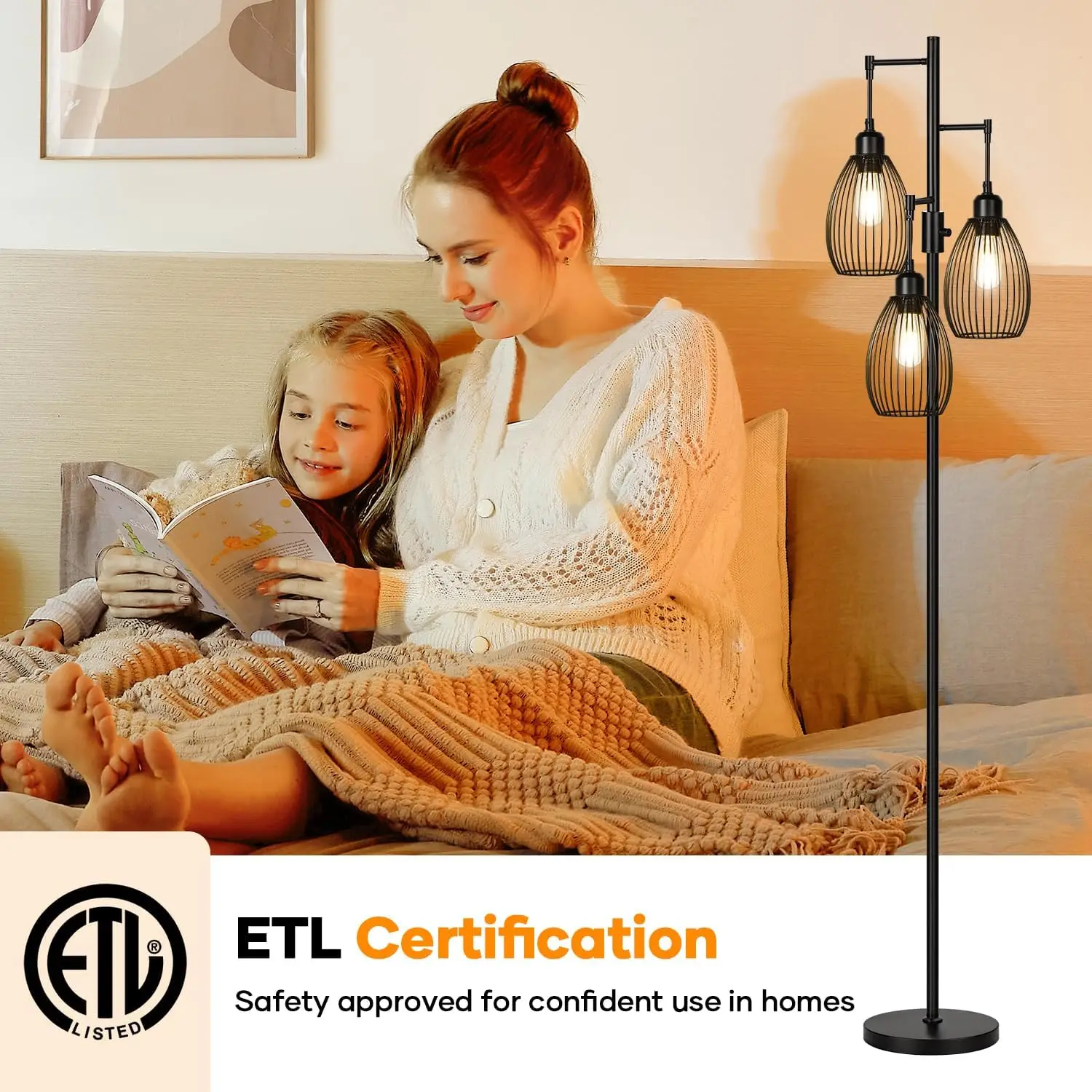
Households with children and pets need extra precautions:
* Use cord covers with stronger attachment mechanisms
* Consider cord concealers with tamper-resistant designs
* Regularly check that solutions remain secure against curious hands and paws
These safety guidelines should inform all the cable management techniques discussed in this article, particularly for homes using black arc floor lamps where darker cables might be less visible and require extra safety consideration.
Managing Arc Lamps in Central Room Locations
Contemporary Arc Floor Lamp, Large Arc Floor Lamp, Oversized Arched Floor Lamp
$460.63 Select options This product has multiple variants. The options may be chosen on the product pageAdjustable Arc Floor Lamp, Bronze Arc Floor Lamp
Price range: $440.95 through $558.52 Select options This product has multiple variants. The options may be chosen on the product pageBrass Arc Floor Lamp, Contemporary Arc Floor Lamp, LED Arc Floor Lamp
Price range: $490.72 through $522.04 Select options This product has multiple variants. The options may be chosen on the product pageChrome Arc Floor Lamp, LED Arc Floor Lamp
Price range: $304.95 through $1,210.40 Select options This product has multiple variants. The options may be chosen on the product pageContemporary Arc Floor Lamp, Large Arc Floor Lamp, Marble Base Arc Floor Lamp
$224.94 Select options This product has multiple variants. The options may be chosen on the product pageContemporary Arc Floor Lamp, Silver Arc Floor Lamp
$459.99 Select options This product has multiple variants. The options may be chosen on the product page
Placing arc lamps in the center of a room creates particular challenges for cable management, but several effective solutions exist:
- Strategic rug layering: Use area rugs with flat cord channels underneath to hide cables
- Specialized flat cord covers: Ultra-thin cord protectors designed specifically for high-traffic areas
- Furniture pathways: Create cable routes that follow the edges of furniture pieces
- Decorative floor cord covers: Covers designed to be visible yet attractive as part of your decor
For cables that must cross open floor space:
1. Map the shortest possible route to the nearest outlet
2. Use cord covers designed for high-visibility areas in colors that blend with your flooring
3. Consider temporary solutions for lamps that will be repositioned occasionally
4. For permanent installations, explore professional in-floor channel options
The pros and cons of central placement approaches:
* Rug-based solutions: Affordable but may create slight bumps in rug surface
* Decorative covers: Visually acceptable but still noticeable on floor surfaces
* In-floor channels: Completely hidden but require professional installation
Understanding how to manage these challenging placements can help when selecting marble base arc floor lamps whose substantial bases often anchor central room designs.
Solutions for Extremely Long Cable Runs
When your ideal lamp location is far from the nearest outlet, special considerations apply:
- Extension cord selection: Choose cords rated appropriately for your lamp’s power requirements
- Cable pathway planning: Map the longest possible route along walls rather than across open floor space
- Permanent solutions: Consider installing new outlets closer to your desired lamp location
- Staged concealment: Use different techniques for different portions of the cable run
Safety considerations for long cable runs:
* Never daisy-chain multiple extension cords
* Use heavy-duty (14-gauge or lower) extension cords for longer distances
* Be aware of voltage drop over distance which can affect lamp performance
* Regularly inspect longer cable runs for wear or damage
Warning signs that your extension setup may be unsafe:
* Cords that feel warm to the touch
* Flickering or dimming of the lamp
* Circuit breakers that trip when the lamp is used
For those considering long cable installations, exploring what look arc floor lamp options might provide insights into models with features that accommodate longer distances from outlets.
Maintenance of Your Cable Management System
Cable management isn’t a “set it and forget it” solution. Regular maintenance ensures continued safety and effectiveness:
Weekly checks:
* Visual inspection for any exposed or loosened cables
* Verification that cord covers remain properly attached
* Quick check for any developing trip hazards
Monthly maintenance:
* Clean dust from cord covers and cable surfaces
* Check all attachment points for secure connection
* Inspect cables for any signs of wear or damage
Seasonal considerations:
* Adjust cable management when moving furniture for holiday decorations
* Check that heating vents uncovered for winter don’t affect cable paths
* Inspect for humidity damage during more humid months
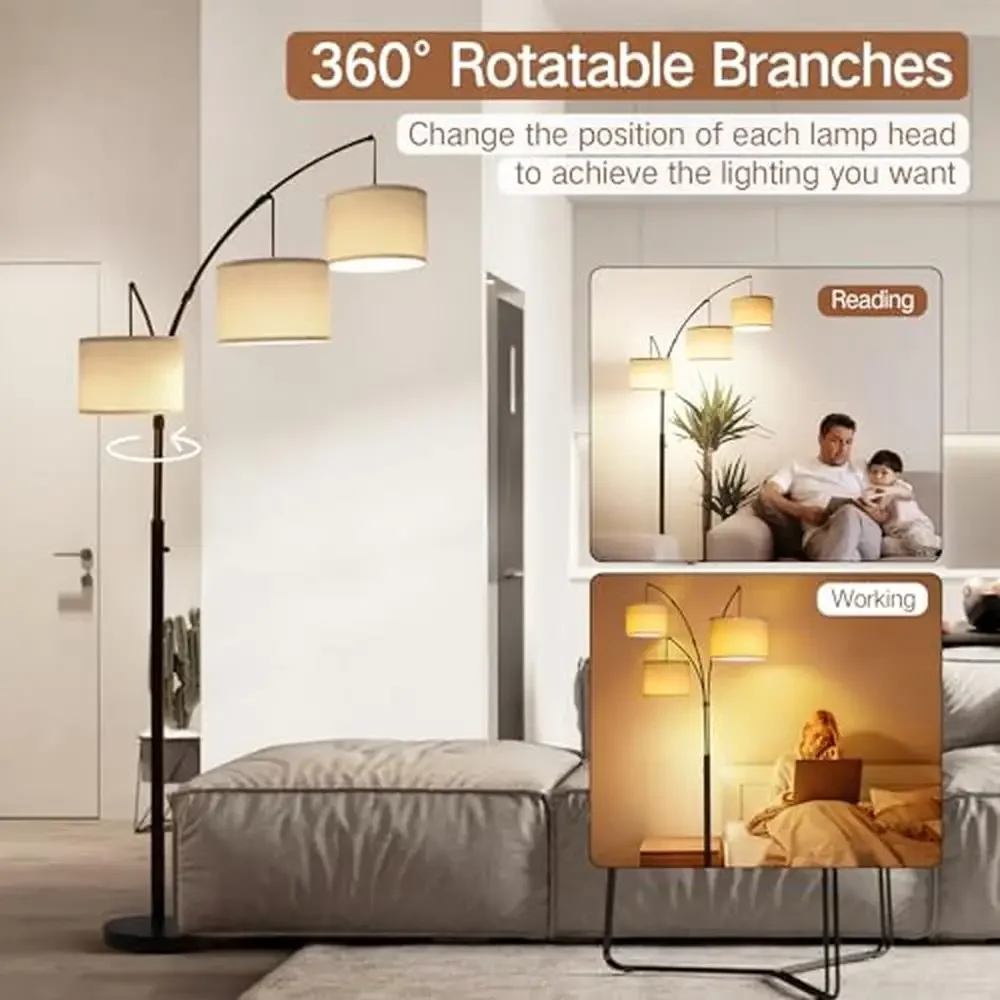
When replacing components:
* Keep spare adhesive clips on hand for quick replacement
* Match replacement cord covers to existing ones for visual consistency
* Document your cable management system for easier future maintenance
Regular maintenance becomes even more important when using more technical lighting solutions like arc floor lamps with integrated cord management features that may require specific care.
Troubleshooting Common Arc Lamp Cable Issues
Q: Why does my lamp cord keep getting kinked and twisted?
A: This typically happens when cables are forced into tight bends. Use larger cable clips that allow for gentler curves, and consider cord covers with more interior space.
Q: Why do my adhesive clips keep falling off the wall?
A: Clean surfaces thoroughly with rubbing alcohol before applying clips. For textured walls, consider clips with stronger adhesive or switch to screw-mounted options.
Q: How can I prevent my cables from creating trip hazards in high-traffic areas?
A: Use low-profile floor cord covers specifically designed for walkways, or reroute cables completely around the perimeter of the room.
Q: What can I do if my lamp’s cord isn’t long enough to reach the nearest outlet?
A: Use a properly-rated extension cord, concealed using the same management techniques as the lamp cord. Avoid connecting multiple extension cords.
Q: Why won’t my cables stay hidden behind furniture?
A: Secure cables more firmly using multiple attachment points, and create small tension loops that allow for slight furniture movement without exposing cables.
Preventing recurring issues often involves combining multiple techniques from this guide rather than relying on just one approach. For particularly challenging spaces, Interior Ivy recommends exploring our collection of best arc lamps for living rooms which are selected with practical considerations like cable management in mind.
Is Professional Help Ever Needed for Cable Management?
While most arc lamp cable management can be handled as a DIY project, certain situations may benefit from professional assistance:
- Complex installations: When cables need to travel long distances across difficult-to-manage spaces
- Permanent solutions: Installing additional outlets or in-floor cable channels
- Safety concerns: If existing wiring is old or potentially unsafe
- Design integration: When cable management needs to seamlessly integrate with high-end interior design
Services professionals can provide:
* Electricians: New outlet installation ($150-300), in-floor channel creation ($200-500+)
* Interior designers: Custom solutions that blend with overall room design ($75-150/hour)
* Custom furniture makers: Furniture pieces with built-in cable management ($varies widely)
Consider professional help when:
* You’re setting up multiple arc lamps in a complex space
* You’re renovating and can incorporate hidden cable paths into construction
* Safety concerns exceed your comfort level with electrical components
For those considering professional installation, choosing the perfect arc floor lamp with cable management features in mind can help reduce installation complexity and cost.
At Interior Ivy, we understand that proper cable management transforms the experience of owning and enjoying beautiful arc floor lamps. With these expert techniques, your stylish lighting can enhance your space without cables detracting from the elegant design.

